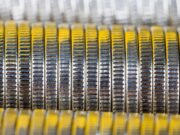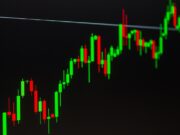The summer season not only impacts consumer behavior but also influences investor behavior as well. Rather than hiding in the sand, we should be looking for lucrative retail stocks poised to flourish amidst the inevitable consumer and tourism rise that occurs each summer.
The seasonal retail stocks that tend to do best are involved in the following:
– Renewable energy
– Recreation and leisure
– Outdoor entertainment
– Food and beverage
– Gardening and home improvement
These stocks offer excellent dividends while also holding the potential for long-term gains. Let’s have a look at what makes these three profitable portfolio picks:
Pool Corp (POOL)
One stock that’s considered a good summertime investment is Pool Corp. (POOL). As the leading distributor of swimming pool equipment and outdoor living products, POOL has it all. While other summer stocks struggled during COVID-19, POOL thrived. POOL’s profits soared in 2020, driven by increased home improvement spending, and the growth hasn’t stopped. POOL continued to climb with an impressive 35% net sales increase in 2021 and another 17% surge, reaching $6.2 billion in 2022. With 60% of consumer pool industry spending focused on maintenance and repairs, POOL is well-positioned to capitalize on its loyal customer base, even with fluctuating pool demand.
POOL’s stock is up by 17.32% year-to-date and comes with a safe 0.94 beta score. POOL shows TTM revenue of $5.97 billion at $16.96 per share, from which it profited $667 million on its 11.23% net margin. POOL boasts an ROE (return on equity) of 55.03% and is forecasted to report $1.9 billion in sales with a $6.31 EPS for the current quarter. POOL has an annual dividend yield of 1.23% and a quarterly payout of $1.10 ($4.40/year) per share. With a 10-day average volume of roughly 434 thousand shares, POOL has a median price target of $387.50, with a high of $445 and a low of $315, allowing room for a potential price upside of over 25%. POOL has seven buy ratings and four hold ratings.
[stock_market_widget type=”accordion” template=”extended” color=”#5679FF” assets=”POOL” start_expanded=”true” display_currency_symbol=”true” api=”yf”]
Home Depot Inc (HD)
The largest retailer in the home improvement industry, Home Depot (HD), shines during the summer months, capitalizing on homeowners’ projects. HD consistently achieves its highest revenue figures in the second and third quarters. With robust sales growth of 14.4% in 2021 and 4.1% in 2022, HD is unstoppable. Its trajectory is set for further expansion, making HD a secure investment. Moreover, it’s an attractive option for dividend investors as Home Depot has consistently increased its dividend over many years, including an impressive 10% hike in 2023.
In fiscal 2022 alone, HD raked in $157.4 billion in sales and achieved net earnings of $17.1 billion. With a sturdy 0.93 beta, HD stock is down year-to-date by 4.40%. Showing TTM revenue of $155.7 billion at $16,42 per share, HD made a same-period net income of $16.75 billion via its 10.75% profit margin. HD has a PEG
ratio of 1.96x, a P/S ratio of 1.9x, a stunning ROE of 1,465.49%, and is forecasted to post $42.2 billion in current-quarter sales at $4.45 per share. HD has an annual dividend yield of 2.77%, a quarterly payout of $2.09 ($8.36/year) per share, and a 47.44% payout ratio. With $9.95 billion in free cash flow and a 10-day average volume of 3.95 million shares, HD has a median price target of $320, with a high of $360 and a low of $266, indicating a potential 20% jump from the current pricing. HD has 21 buy ratings and 15 hold ratings.
[stock_market_widget type=”accordion” template=”extended” color=”#5679FF” assets=”HD” start_expanded=”true” display_currency_symbol=”true” api=”yf”]
Nike Inc (NKE)
There are compelling reasons to invest in one of the most well-known sports apparel brands ever put on the market; the company I’m talking about is Nike Inc. (NKE). With solid demand on its side, NKE’s direct, wholesale, and digital sales have all grown over the years. NKE also has control over its inventory levels, which increased in line with the company’s sales. Also, a benefit for NKE is its market share expansion and its dominance over its competitors. Adidas and UnderArmour, NKE’s two biggest challengers, have faced difficulties, only solidifying NKE’s market position.
NKE’s stock is down year-to-date by 4.50%, it shows TTM revenue of $50.68 billion at $3.57 per share, and it made a same-period net income of $5.5 billion via its 10.82% profit margin. NKE has a PEG ratio of 1.88x, an ROE of 37.34%, and year-over-year revenue growth (+13.97%). For the most recent quarter, NKE reported an EPS of $0.79 per share vs. the $0.55 projected by analysts (a 44.57% surprise), and it reported $12.39 billion in sales vs. the $11.48 expected (a 7.92% beat). NKE has an annual dividend yield of 1.21% and a quarterly payout of 34 cents ($1.36/year) per share. With a free cash flow of $2.87 billion and a 10-day average volume of 9.91 million shares, NKE has a median price target of $138, with a high of $160 and a low of $95, allowing the potential for a 43% price increase. NKE has 22 buy ratings and ten hold ratings.
[stock_market_widget type=”accordion” template=”extended” color=”#5679FF” assets=”NKE” start_expanded=”true” display_currency_symbol=”true” api=”yf”]






